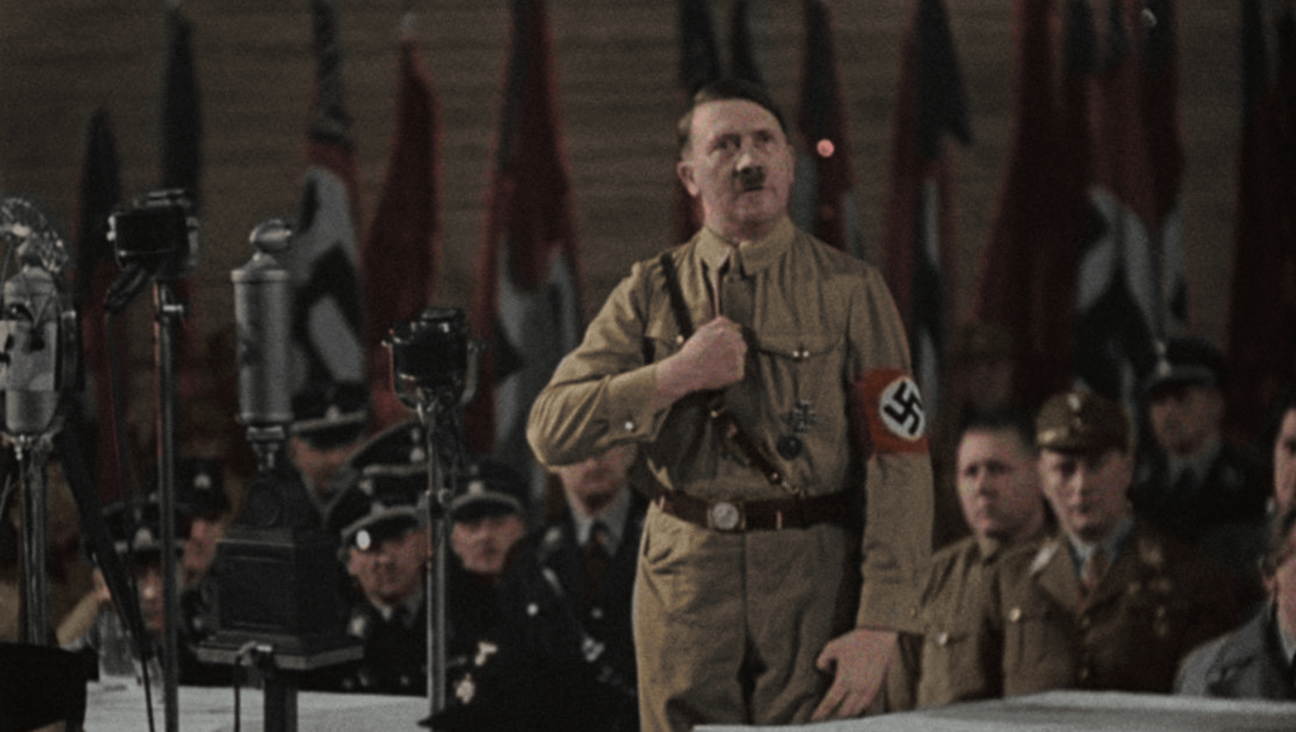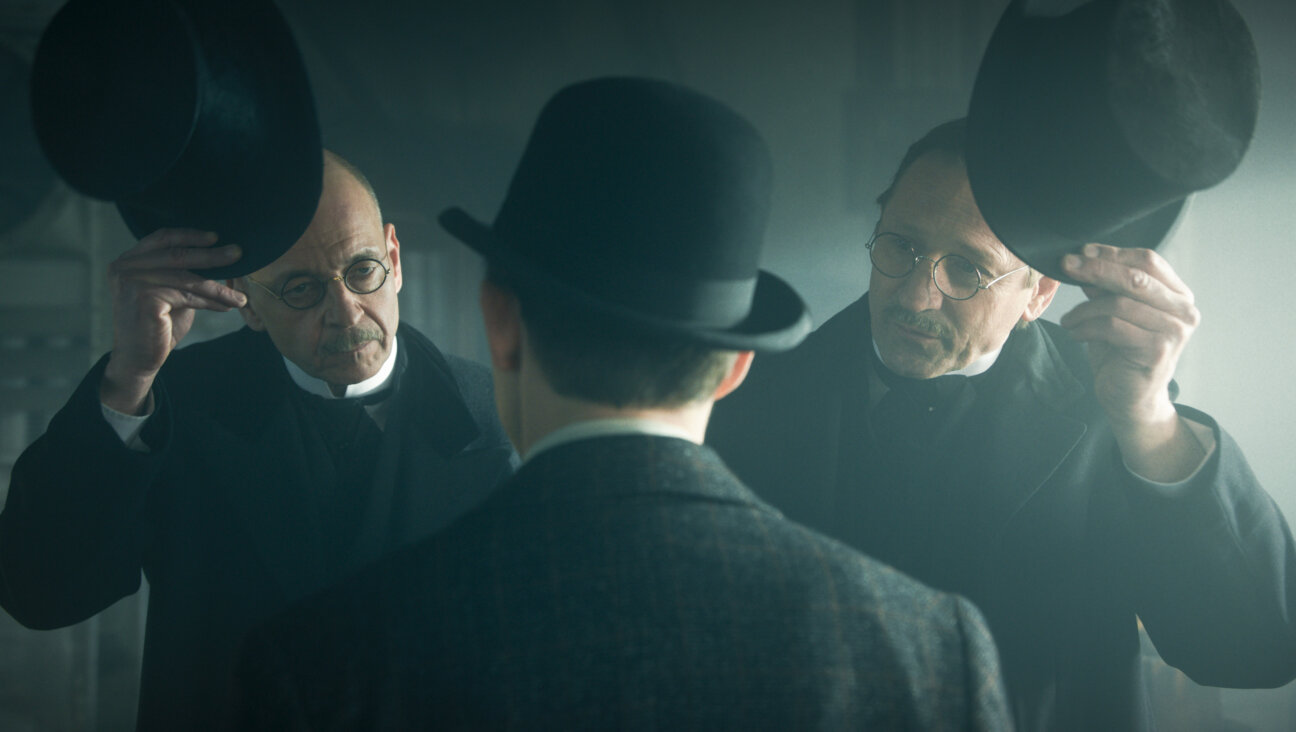I built the ‘Seinfeld’ apartment from Lego — it nearly broke me

The finished set. Photo by PJ Grisar
I grew up in a house with a framed cocktail napkin signed by Jerry Seinfeld and every episode of his sitcom taped on VHS. All this is to say that I have a long history of welcoming the man into my home and am pretty familiar with the layout of the “Seinfeld” apartment.
That said, I still marvel at the efforts made to reproduce it, from a pop-up in New York to a $500, hand-painted scale model. When Lego announced it was coming out with an $80 “Seinfeld” playset, my first thought was I wanted it. The next thought was that I should document this sure-to-be grueling experience, where I’d learn about the Show About Nothing and, hopefully, myself. (Or something like that.)
Below is a timeline of my process, for which I eschewed social engagements, comfort and a small bit of my sanity all for a 1,326-piece toy that, according to one Lego review website, should take most people three leisurely hours to complete.
August 18 (Day 1)

The task before me. Photo by PJ Grisar
10:48 a.m.
The set arrives via FedEx at my apartment in a large brown box. When I open it, I see that the Lego box only fills about half the space of the package. The rest is packing paper — very wasteful!
On examining the box, I see that “Seinfeld” is currently a Warner Bros. property and I am immediately miffed that there were no cameos from the show in “Space Jam: A New Legacy.” Inside, along with the bags of bricks and parts is a 175-page booklet, which describes the basic premise of “Seinfeld” and includes character descriptions of the five minifigures, Jerry, George, Elaine, Kramer and Newman.
Who are these descriptions for? Who buys an $80 Lego set of a show they’ve never seen? Unclear, but the booklet also informs me that a dude named Brent Waller dreamed up this set in Lego’s IDEAS lab. He’s a “3D Environment Artist” and co-founder of a video game company in Brisbane, Australia. (Australians — at least the ones I’ve met — LOVE “Seinfeld.”)

The architect of my anguish — and my joys — Brent Waller, an Aussie who, I imagine, may answer to the nickname “Wallerby.” Photo by PJ Grisar
This guy is on another level. He watched “Seinfeld” in the company of a scale model to make sure the bricks matched the paint color of the walls, designed by “Seinfeld” scenic designer Thomas Azzari way back in 1989.
The pamphlet also lets me know that Waller had accomplices: Lego model designer César Carvalhosa Soares, and senior graphic designers Crystal Marie Fontan and Madison O’Neil. These people developed this ordeal of mine. They look fun I guess, posed in Seinfeld-inspired shirts, but Madison says that Newman is his favorite character so I’m very suspicious of him.

César, Crystal and Madison, the Lego maniacs who made the “Seinfeld” set a reality. Photo by PJ Grisar
At this point I have a decision to make. Do I do what Waller did — stream “Seinfeld” for the entirety of this build? Should I play the theme on a loop? Or maybe, in a knowing nod to the establishing shot of Monk’s, “Tom’s Diner” by Suzanne Vega? I decide for my own wellbeing to just watch the show. I can time-lapse it and play the bassline under that footage.
6:35 p.m.
I begin assembly shortly after receiving the news that Colin Jost and Scarlett Johansson named their firstborn Cosmo. Y’know, like Kramer. It feels like a sign. But just as I gather my courage, and try to queue up an episode on Hulu, I learn that “Seinfeld” is currently without a streaming service.
YouTube it is. (I am not unemployed and don’t live with my parents, so I don’t have access to the aforementioned VHS tapes.) Because the first thing I’ll be building is the stage where Jerry performs his standup cold opens, I find a compilation of those.
The looping bassline is water torture. I start at a good pace though, before I realize that I appear to be missing a piece. This drives me momentarily bonkos wondering if I’ll need to complain to some Danish brick mason.
But it’s in another bag. I decide to take a break, and make plans with a woman on a dating app who has never seen “Seinfeld.” I think to send her the handy primer at the start of the instructions, but don’t.
7:31 p.m.
I build the floor of the apartment. I am now watching a video called “Seinfeld ‘The Coronavirus.’” It features real clips from the show recycled to make a timely narrative, with Jerry avoiding kisses from his neighbors, George double-dipping — creating a super-spreader event at a wake — and Kramer having kennel cough. (Also featured is Poppie, who doesn’t wash his hands.)
A friend tells me that, according to Page Six, Larry David yelled at Alan Dershowitz at a grocery store on Martha’s Vineyard, where the latter once complained he was being “shunned.” The fact that this is its own “Curb” episode is trite but nonetheless accurate.
I load up this SNL sketch, where a murder took place at a facsimile of the “Seinfeld” apartment and Charlie Day doesn’t know what “Seinfeld” is. (Note: Send him the introductory pages.)
My roommate, Scott, walks over as the playlist lands on a part of a compilation video featuring that episode where an NYU student thinks that George and Jerry are lovers. I think that, after a decade of living together with Scott, some may suspect us too.

George with the fishing pole and marble rye. My roommate noted that this figure’s expression was “upsetting.” Photo by PJ Grisar
August 19 (Day 2)
7:12 p.m.
My neck hurts. I’m hot. I feel like Elaine after sleeping on the unforgiving sofa in Del Boca Vista.
Craning my neck to tile the floor with smooth, brown pieces is an exercise in patience (serenity now). I need to make sure the slats are staggered in the manner of hardwood. I also need to consider a small fan for my own kitchen.
Scott invites me to see a concert nearby. I decline. My life is Lego. I am an architect — George’s dream.
August 20 (Day 3)
1 p.m.
I don’t expect to build tonight. I have a date with that woman who never watched “Seinfeld.”
That said, there is a hurricane coming. For lunch, I tip a Seamless delivery guy 30%, an amount commensurate with the nasty but still manageable weather, only to learn that it’s not even raining. My friend Gina says that requesting a hurricane rate tip back is basically the plot of a “Curb” episode. Right again.
I don’t really feel up to the date. I’d rather return to my Lego friends, so part of me is pulling for inclement weather, which my app says is not likely to arrive till Saturday. My date texts me to report she may have shingles — the relief I feel is immense, though obviously that sucks for her.
3:50 p.m.
I’m working along to a video called “Seinfeld Power Hour,” which you’re supposed to drink along to. This playlist stumbles onto the scene where Kramer announces that he is “Cosmo Kramer, the Assman.” I realize Colin Jost and Scarlett Johansson might have made a larger mistake than I originally thought.

They really thought of everything — even Kramer’s coffee table book about coffee tables (which, possibly for safety reasons, does not have legs). Photo by PJ Grisar
August 21 (Day 4)
12:54 p.m.
Bracing for Hurricane Henri, I find a video called “Seinfeld Coats and Jackets pt 1.” Yes, there was enough material for a part two.
I am now constructing the various pieces of décor around Jerry’s apartment, coming to realize that what I always thought was an inexplicable microscope near his computer is probably just a lamp. I lovingly — and imperfectly — stick Uncle Leo’s visage onto a tile piece and apply it to a wall.
Decamping to the Museum of the Moving Image, where I watch a restoration of “Spartacus,” I learn that my friend Pat and our friend Chris also bought this Lego set. So far, I am way ahead of them.
While “Spartacus” is the film Elaine was seeing when she inadvertently flashed Lloyd Braun, no such display occurred at MoMI. But when Kirk Douglas yells “I am not an animal!” early on, I naturally think of this scene, which is definitely meant to be referencing “The Elephant Man” and “The Merchant of Venice.” (I usually think this much about “Seinfeld,” so the Lego set is not entirely to blame.)

Jerry in his kitchen. Note the fridge details and “tasteful” photo of George to the right. Photo by PJ Grisar
August 22 (Day 5)
12:29 p.m.
Henri turned out to be something of a bust, despite the all-day rain.
I continue my work on the walls of Jerry’s apartment, letting YouTube autoplay mostly best ofs until it arrives at a video devoted to “Negotiations.”
In it, George tries to revive the practice of haggling at a store and Morty and Kramer dispute their cut on a sale of beltless raincoats. Is this problematic given this sort of thing’s unflattering association with Jews? Probably! But I am doing such good work.
12:53 p.m.
I’m installing Jerry’s stove and refrigerator and the counter space whose remodeling caused so much chaos. I am accomplishing something, and can take pride in it.
August 23 (Day 6)
2:28 p.m.
I messed up.
You see, there are these gray bricks that make up the baseboard of Jerry’s walls and also his counter. They are textured and I just assumed they were the same on both sides. They’re not; on one side, the ridges run horizontally and on the other side, they’re vertical. They’re all supposed to run vertically, but because I wasn’t paying attention, they’re all over the place.
It takes me about a half hour to fix my shoddy work, during which time I listen through many of the same things: Kramer and the Cuban cigars. The Festivus feats of strength. More subplots about modelling than I remembered. It’s maddening listening to so much repetition and yet has also become a kind of lulling white noise by which to measure my progress. (I once heard that Yankees announcer Michael Kay watches “Seinfeld” for comfort in whatever city he’s in when he’s on the road. I know this about him and also that he loves carbon monoxide detectors.)
I’d like to say as the clamor of these antics blared in the background that I had an epiphany as to my larger progress in life and that I saw how “Seinfeld” led me here. I grew up with it. An essay I wrote about growing up with it got me into grad school. A piece about “Curb Your Enthusiasm” was in my application for the Forward. I owe a lot to Larry David and Jerry Seinfeld.
It would be great for this story to relate these points, realized in a moment of “Seinfeld”-saturated delirium. But I am only now having these thoughts as I write them. In the moment I was just cursing as I tried to pry my misaligned pieces apart with a brick separator.
Still, I’m nearing the finish line, poised to emerge triumphant like Jerry in the foot race. I construct a portion of the hallway and confirm that yes, it is architecturally impossible.
August 24 (Day 7)
9 a.m.
The “Best of George” clip begins with a montage of him lying about being an architect. My imposter syndrome finds a handy parallel.
Now I am building the stuff. The name-brand product-type stuff at the core of the “Seinfeld” origin story, when David and Seinfeld were making fun of items at the Korean grocery and decided it should be a sitcom.
There’s the Superman statue on the bookcase near a tape of “Prognosis Negative,” one of the show’s better-remembered fake films. There’s what I believe is a Tweety bird Pez dispenser. I cobble together the seafoam couch that had its own storyline, after the previous one was befouled by Poppie’s incontinence.
If these plastic walls could talk, they would speak of a rich history of extreme antisocial behavior. It’s evidenced by props like the marble rye and fishing rod in George’s hands, the Festivus pole, the mere presence of a mini Newman (are you happy, Madison?).
Somehow YouTube’s playlist takes me to clips of bloopers. I guess I’ve exhausted everything else, or at least it feels like it. In any case it’s apt, because now is the time when I realize some of my smaller mistakes.
Coming down to the last of my cache of bricks, I see I either misplaced some pieces or used them improperly.
I make it work as I rig the (to my mind unnecessary) theatrical lights from trusses hooked onto the cornices, revealing the show — and even the action of this playset — to be a work of fiction.
At 10:36 a.m. I complete the set.

The finished set. Photo by PJ Grisar
It’s a marvel to behold, the way a limited batch of preexisting pieces could create something so true to life. The way colored bricks with no detail assume the impression of cereal boxes when placed in a cupboard. How a red disk and a translucent yellow peg clicked together became a lighting fixture. How tension lines at the waist of the Jerry figure capture the oversize nature of ‘90s dress shirts. It is unmistakably the “Seinfeld” apartment, made up of abstractions and loving details and a surprising amount of black ray gun-looking pieces. It’s now a small home in my home.
What did I learn? Well, to break from the “no hugging, no learning” rule, I found out that “Seinfeld” is best viewed in episode form, and for this reason I hope that it returns to a streaming service in the near future (and also that Steve Bannon doesn’t see a penny from the transaction).
I could wax poetic about what I took away from the videos: the show’s themes of duplicity, overfussy personal preferences or crusades to get one’s way in the world in the face of a stringent social code — all while believing people are in breach of your own view of a just society. But I kinda knew all that already.
Instead I learned that Jerry’s apartment remains nicer than my own, while its miniature has enhanced my own décor.
The takeaway from the personal journey is that I need to be a bit more careful, taking my time to get things right as a way to save time later. I also learned that, like George, I’m not cut out to be an architect.
























